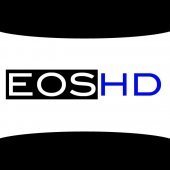Leaderboard
Popular Content
Showing content with the highest reputation on 12/03/2024 in all areas
-
That would be easy for Canon actually, just stick the R5ii sensor and CPU allowing Clog2, better AF etc. Add a Full HDMI port. IBIS. Would be incremental though. What Id like to see is actually something closer to 1DC with the R3 body allowing long batterie life, vertical video shooting and of course open-gate. But that’s wishful thinking, it won’t happen. Another very weird thing Josh Satin revealed was that the rolling shutter on R5ii is somehow worst than R5C even though it has a stacked sensor. On top of that you still got pixel binned 4K60p which is a total deal breaker. I really don’t get what the stacked sensor is there for, maybe stills?! So for me right now, R5C is the best bang for buck hybrid cam in Canonland. Used prices keep falling to the point I may trade in some gear for one. With the vari-ND EF adapter it’s like a mini C line cam with 45MP stills cam included.2 points
-

Tips for LOG shooting
Pepe and one other reacted to Andrew Reid for a topic
The problem with LOG is first of all that the gamma assists are a bit rubbish. (Aside from the Panasonic S9 and cameras where you can load on a LUT and monitor with it, without resorting to some shitty external monitor) But on the more common and better specced cameras you can't do that... Nikon Z9, Z8, Sony a1, a7 IV, GFX 100, Z6 III, EOS R6 II and so on. Secondly you should never really shoot it WITHOUT a gamma assist. Contrast, tonality and light are a really important judgement in cinematography and you can't really see any of that with a very flat display. Sure you can toggle LOG profile on/off quick in the menu and judge... but doing so is a PITA every time you want to see the real contrast and lighting. The gamma assists are all quite bland looking and flat with not very much pop, I find. Then we come to the LOG profiles themselves... EOS R6 Mark II / R5 / R3 all have C-LOG3, which a lot of people complain about but I don't mind. One of the better ones and easier to grade. C-LOG2 is reserved for the Cinema EOS line. C-LOG3 is closer to the original C-LOG on the 1D C, I seem to remember. Sony a7 IV has S-LOG2 and S-LOG3, they offer the widest dynamic range of the bunch but you still have to get exposure perfect for optimal image quality. Gets noisy really fast if you under expose. N-LOG on the Nikon cameras needs the most colour correction, otherwise you have very green-olive skin. By the way, there is a very small difference in image quality between 50Mbit/s 10bit 420 H265 on the Sony a7 IV and the higher bitrate LOG formats in range of 200-500Mbit... yes even in S-LOG3! So you can save a lot of money and card space there. With standard gamma picture profiles you don't need to shoot 10bit... 8bit will look the same. People tend to overestimate higher numbers on the specs sheet. So those tips in summary: Don't shoot from a flat image off the back screen Nail exposure to get the maximum dynamic range benefit from LOG With modern codecs like H.265 in 4K/24p - don't bother with the higher bitrates in most cases, the laws of diminishing returns apply big time (Although if you're shooting 8K or high frame rates then 200-500Mbit/s is recommended) C-LOG3 is easiest to handle, with N-LOG last Hope that in-camera LUTs/monitoring becomes a common thing, it's really bad that it isn't even 12 years since LOG first came on the mirrorless camera scene.2 points -

EOS R5 dips below 2000 euro used / Pros and cons of current mirrorless cams
zlfan reacted to Andrew Reid for a topic
Sharing my notes... If I were to consolidate a few cameras (I'm selling 3-4 of them) into one newer one, which would it be? My current main cameras are Fuji GFX 100 and Sony a7 IV. I sold the a1 as wasn't really using the extra resolution or speed, but mainly because of the risk of crazy depreciation now the new one is out... We'll come back to that in a moment though. I see the EOS R6 Mark II is currently on sale for 1800 euros brand new, which seems like a good deal but then you realise a used EOS R5 costs about the same now as it's 4 years old. Given the R5 does 4K/120p, internal 8K RAW, higher resolution stills, oversampled 4K from 8K, whereas the R6 Mark II is... erm... newer, maybe less overheating issues, the R5 starts to look like a better buy.... Although the R6 II has a much more convenient movie/stills switch and a proper mode dial. Main drawback of RF cameras for me is the poor performance of IBIS when used with adapters and manual focus lenses. It almost stops working entirely. Same goes for EOS R3, and the R5C lacks IBIS entirely. Now let's compare to Nikon Z6 III is 2500 euros / dollars. It is very similar to the EOS R6 Mark II in most regards but the lens mount is more flexible and you get better IBIS no matter the lens. 6K, 4K120fps (cropped?), but is it better than an EOS R5? Z8 would make more sense for me... but now we're in the 3500 euro range. It's an exciting camera but at that price, we're back at looking at a used a1 surely? E-mount for me has more going than Z. Problem is the Sony a1 used is still £3200/3800euro/dollar, so it hasn't come down much yet since the a1 II announcement... Better to wait until it has reached the 2500-3000 range, at which stage it's a no-brainer and would be my choice over everything else mentioned so far. The 8K codec internally, is a match for Canon RAW and N-RAW in my experience. The a7 IV is best bang for buck... 1400 used, for a camera with very little missing... No 4K120fps of course, and rolling shutter is higher than something like the Z6 III. 4K/60p is a crop, but I'm still more of a 24fps guy and it does that very well. A9, the original one... is about the same price. If you don't mind the lack of LOG, 10bit codec, H.265, new colour profiles and 4K/60p, the a9 is very capable especially for stills. It's the only one that has a fast enough electronic shutter for under $1500 to truly be a silent stills camera like the Z8 and Z9. Now to the latest and greatest, and we have to go to $5k-$7K realm... Doesn't seem worth it to me? The mid-range is just so good now. EOS R5 Mark II is an evolutionary update. EOS R3 doesn't do as much as a Z8 when it comes to video + IBIS issues. Z9 is trumped by the smaller and cheaper Z8 for the same spec. The A1 II and a9 III are just too crazy expensive, although really cutting edge. Which would you choose between $2k-3.5K? A7R V gets a shout?1 point -

EOS R5 dips below 2000 euro used / Pros and cons of current mirrorless cams
IronFilm reacted to Benjamin Hilton for a topic
I'd have to agree that the Sony A7R IV is the best bang for buck and all around useful camera on the market right now. It doesn't have any huge headline selling points, but it just does video and stills really well. No major flaws, and just a gorgeous image. If you need to go cheaper, I'm leaning on FX30s. Still a great image, good form factor, and just a solid camera for the price. The Canon R7 is a solid option too in this cheaper category. It's pretty cool these cameras exist in this price bracket, that for under $1500 you can get good stills, solid 4k with good DR, good color, auto focus, solid audio, the list goes on. No excuse to not be out there creating good visuals these days1 point -
"And in terms of the high-end, it's ARRI, ARRI and VENICE" 😝 (or maybe I should have said: "And in terms of the high-end, it's ARRI, ARRI, ARRI, ARRI, and VENICE" Or even "And in terms of the high-end, it's ARRI, ARRI, ARRI, ARRI, VENICE, ARRI, ARRI, ARRI, RED, ARRI, ARRI, and VENICE") Many decades ago Nikon made cinema lenses. NikonRumors.com already mentions there is a Z Mount cine lens in development. Plus I expect RED/Nikon if they have any common sense whatsoever will offer it with a locking Z Mount, so users can go with PL mount, as if it is "native PL mount". Every Sony E Mount cine lenses could be used on a Z Mount Cine camera with an adapter. And I expet once the RED/Nikon Z Mount camera is announced then 3rd Party Manufactures will be announcing quickly more products compatible with it, for instance the Fujinon MK zooms for Z Mount too. (a good chunk of Avatar got shot on it) A market that they really need to announce the next camera for this will have built in NDs, and could benefit from Nikon's AF tech. No problem at all if this camera has a locking Z Mount1 point
-
I've been seeing Sony PMW-F55 cameras go for half that, which is just insanely cheap. And Panasonic Varicam LT for sub $2K. Those would be at the top of my rankings if talking about purely for video. Cheapest ARRI AMIRA is still close-ish to nearly $10K, unfortunately. Although that's just my personal opinions/preferences, and not what @Andrew Reidis looking for. Not sure why the FX3 doesn't get a mention? As is leaning towards Sony already, and is a more video focused camera than the a7. And could keep the GFX 100 for stills?? Also the Panasonic S5mk2 is worth a litlte bit extra consideration too?1 point
-

EOS R5 dips below 2000 euro used / Pros and cons of current mirrorless cams
zlfan reacted to Andrew Reid for a topic
Really the images are all very similar, you're just getting different ergonomics and mounts. Even at just 50Mbit/s or 100Mbit/s H265 (like a Samsung NX1!), the image on these modern cameras in 10bit LOG holds up well against RAW at many many times the data rate. We underestimate H.265 A7 IV for most people is the ultimate 4K image for the price (and oversampled from 7K!), if you don't mind the rolling shutter. The S1H is smoother looking on fine detail thanks to the AA filter, but it's a chonky boy in comparison and of course for those who need autofocus a complete no-go. The C70, I would not be as interested in... purely because it isn't full frame, but 90% of my lenses are. Shout out to the humble Sigma FP-L... If you want the smallest possible thing to plonk on a tripod and do its best Alexa imitation, you can't beat the 4K Cinema DNG goodness on that... Just make sure you put it in oversampling mode (1.3x crop) and if you plan on digging deep into the shadows, use an SSD.1 point -
If you talk purely about video I would be intrigued by a used C70 for 3K. The image is no contest in its RAW flavours, being on og Alexa level, though noise is less film like under extreme conditions in comparison. I paraphrase out of an article from German test site slashcam. Besides a fantastiv image it provides great usuability, regarding battery life, NDs and so on, all in a potrable package. As a hybrid I would find the Z6III very tempting. For video I like the image the most from what I've seen on the web. Specs vs price ratio it's a champ imho. Next would be a used S1H, with some of best thick and slim codecs I've seen. Great image pipeline, superb build and a joy to use. I got the S1H and the S1, both are built of equal high quality, the S1H still feels looks and operates so much nicer for me. It would be endgame camera for me with less rolling shutter plus focus punsh-in while recording. The image provides beautiful quality for post work though taking a bit more work to get the most out of it if imo. Shout for A7IV, especially if battery is as good as in the A73. I've seen stellar stuff shot by a buddy of mine. Dynamic range, color are top notch. Worse rolling shutter than a S1/H,5/II though? R6II sounds interesting but I don't know much else besides hearsay. So, of the newer cameras my choice would be to test out a Z6III.:)1 point
-
Absolutely! Although I see them as serving two slightly different hybrid users: the cinema/photo shooter and the all round video/photo shooter. On another note, if the R5C ends up being a one-off release, it will be Canon's unicorn cam when it comes to the sheer amount of features packed into its mirrorless styled body. Kind of the way the 1DC was a one-off with an image that made it kind of a unicorn amongst DSLRs.1 point
-
Why Don’t Cameras Have Better Built In Screens?
Thpriest reacted to eatstoomuchjam for a topic
Do you mean the Osmo Pro and Osmo Raw which used the Zenmuse X5 (shared with one of the Inspire drones)? They didn't come with any screen at all - maybe one was available as an add-on purchase, though. The way I used my Osmo Raw was with my phone as the screen (which does make for a big/nice screen). The Ronin 4D, FWIW, has a pretty big screen as well - not as big as a BM Pocket 6K, but definitely bigger than most mirrorless cameras.1 point -
I am very intrigued to try the RED Film Bias LUT for N-Log, - it looks nice from the examples I have seen. I was hoping to have tried it by now, but had shit weather and other obstacles in the way including a ton of work that needs finishing. But I have a full day set aside in about 2 weeks for pure capture purposes. Then I'm going to put it up against my conversion LUT of choice for my S5ii and see which I like best. It will at least help with any future decision I need to make within the next 4 months whether to flip to Nikon for all my video needs for 2024 or continue with a hybrid Lumix/Nikon mix. I'd rather just shoot one brand though and based on recent history and current scenarios, I think I'd want to be backing Nikon over Panasonic... Zf, Z6iii, Z8 vs solo effort S5ii.1 point
-
100% agree. Lower cinema segment. Here in Europe, upper cinema segment is Arri Arri Arri and a pinch of Sony Venice. But my Question is: once you have this amazing Z-mount Red cinema camera, which Nikon lens will you use? I mean cinema lens. Correct me if I'm wrong, I'm not talking about Z-mount third-party suppliers but Nikon native cinema lenses. It is true that in theory Nikon has a very long tradition in lenses but basically they are all photographic lenses. Lately they seem to be creating a cinema line but Canon is light years ahead. One market segment where the Reds are still the undisputed queens is wildlife documentaries on land and underwater. 90% of BBC and high end documentary operators use Red for 8K and high framerates. Canon CN zooms are the bread and butter of these productions. Hard to imagine convincing everyone to switch to Nikon. More adapter rings? Hummm1 point
-
"The highly anticipated RED Digital Cinema camera featuring Nikon’s Z-mount is slated for release in Q4 of 2025. " Still nearly a whole year away. nah, it's not a major threat to ARRI, as the article says: "Hence, the Z-mount RED camera takes this collaboration to the next level, signaling Nikon’s ambitions to challenge industry leaders like Canon and Sony." I suspect it's the Canon C70 / C80 / C400 and Sony FX6 / FX9 it will be competing for , although perhaps leaning more into RED's cinema pedigree and weaker in the ENG/OMB/videographer capabilities. Although hopefully the next generation from RED does addresses this, give us a luxury of codecs beyond just redcode (ProRes and H.265, and have the option to burn in LUTs. Komodo has already taken a step in that direction), give us internal NDs, give us XLR inputs (or at least mini XLR), etc RED/Nikon can simply get themselves into position as the #2 player for the sub $10K market (at the moment are they even #3?) then after that is achieved they could look at pushing to establish themselves as the #2 choice also for the $25K+ market. (as at the moment it's ARRI and then Sony)1 point
-
A tilting EVF would address a lot of these concerns. Sure you can rig an external EVF but they're always huge and expensive. The built-in EVFs in mirrorless are already pretty great, and compact, they just need to articulate. I always wondered if it would work to have a 5-5.5" or even 6" screen, that is basically the size of the entire back of a mirrorless body; on a fairly typical tilt mechanism, with most of the buttons meant for your right thumb hidden under the screen. So you pull the screen away from the body (or even just tilt it up), and your thumb fits under the screen to use the controls. You could have touchscreen controls that pop up when the screen is pushed flat against the body. You could also have the screen slide an inch or two to the left, to reveal the buttons. I'd also love to see grips rotate. Like a C100/200, FS5 etc- but without the grip being huge and stood off from the body. The Canon XC10 has this done pretty well. This combined with a tilting EVF (again like the C100ii or C200, not the stupid loupe the XC10 has) makes handheld shooting so much more comfortable.1 point




